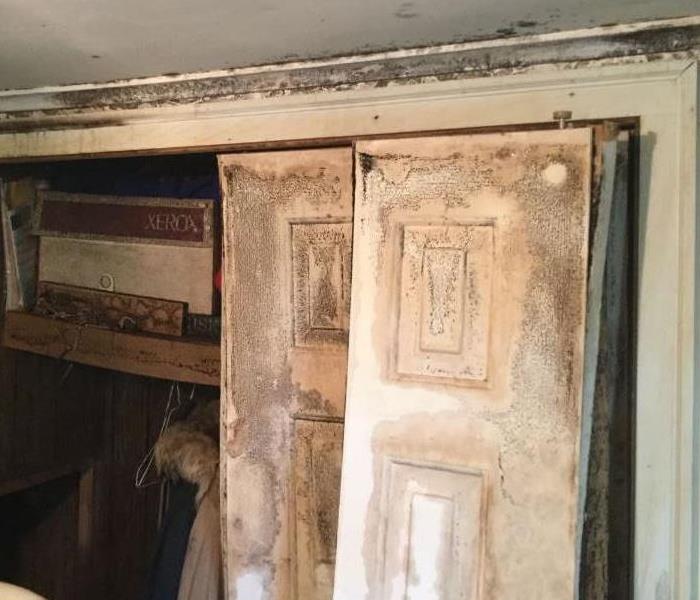Project Estimators Best TIps
6/25/2018 (Permalink)
 This is an example of mold damage that occurred after the homeowner suffered water damage on the floor level.
This is an example of mold damage that occurred after the homeowner suffered water damage on the floor level.
Summer brings lots of outside activities and happy memories, lazy days at the beach and nights by the campfire. But it can also bring severe storms. Although these can move out as swiftly as they move in, we often experience heavy rains that the ground simply cannot absorb quickly enough. When that happens, water will find the downward path of least resistance, which can often be your basement.
We asked our Project Estimators, Brian Carifio and Ross Martin, what their best advice was to homeowners after heavy rainstorms. Here are their top tips:
- What’s the first thing you would advise a homeowner to check after a storm?
Brian Carifio: The Basement. Water will find its way there. Ideally, if they’ve been pre-emptive, they’ll have their contents up off of the floor on plastic shelving and/or in plastic containers. Keeping contents 2–4 inches off the floor will help to avoid most flooding concerns. If the water reaches above that, they have a whole other set of problems. Plus, content damage is not generally covered by insurance when due to flash flooding.
- Okay, they’ve done that but they still have water in the basement. What should they do next?
Brian Carifio: Call SERVPRO. Not to sound self-serving but the longer the homeowner waits…or tries to mitigate it themselves, the greater the probability of mold beginning to grow. Most DIY attempts at mitigating water damage fail simply because the necessary equipment is not available to consumers. You need strong extraction systems, high capacity dehumidifiers, and air movers (not to be confused with oscillating fans).
- What’s the worst thing a homeowner can do when they find water in their basement?
Ross Martin: Put an oscillating fan on the standing water. First of all, you can run the risk of electrocution. Beyond that, fans only whisk the air off the top of the water’s surface and move it into the air. Doing that without proper dehumidification in place can lead to mold on other surfaces.
- Can you explain that process more?
Ross Martin: Sure. When you have a flood, if left alone the water will eventually evaporate. But that doesn’t mean it disappears. It simply changes from a liquid to a gas and moves into the air. Moisture in the air is relative humidity. That humid (moisture heavy) air is then able to touch & attach to every single surface in that space and beyond. This is the “perfect storm” for mold growth.
Our process is to first extract the water with truck mounted vacuums, then use our air movers and dehumidifiers simultaneously. The movers circulate the air, keeping it from absorbing into surfaces while the dehumidifiers remove the moisture from the air.
- Can’t homeowners do this themselves?
Ross Martin: Yes and no. There are several points to consider. First, consider the weight of water (not the movie!). A gallon of water weighs 8.34 lbs and most shop vacs hold 10 gallons. That means you’re carrying 83.4 pounds upstairs, multiple times.
Secondly, most people have fans in their home and will put several on the affected wet areas, thinking this will dry it out. It won’t. Fans are not strong enough and they don’t actually dry anything. They just move the moisture off the top surface, dispersing it throughout the air.
And lastly, most consumer-bought dehumidifiers are too small to effectively dry the air in an average sized basement. Most are purchased rated at 30 PPD (Pints Per Day). That’s how many pints of moisture it can handle per day. Our smallest is 70 PPD and goes up to over 133 PPD.
There are some steps you can take before help arrives though.
- Remove excess water by mopping and blotting.
- Wipe excess water from wood furniture after removal of lamps and tabletop items.
- Remove and prop wet upholstery and cushions.
- Place aluminum foil or wood blocks between furniture legs and wet carpeting.
- Turn air conditioning on for maximum drying in summer.
- Remove colored rugs from wet carpeting.
- Remove art objects to a safe, dry place.
- Gather loose items from floors.






 24/7 Emergency Service
24/7 Emergency Service